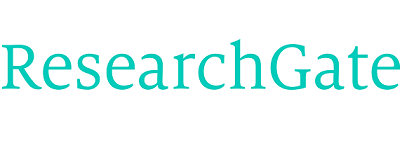Vol 4 Issue 2 October 2016-March 2017
Ihuoma Ezebuihe, Carmen Sigley
Abstract: Aim: To report findings from analysis of the concept of health literacy (HL) in an effort to clarify its meaning, decrease ambiguities associated with the use of this concept and promote the consistency in using this concept in Nurse practitioners (NP) primary care clinics and research.
Background: The concept of HL is relatively new and was identified a decade ago. HL was defined as individuals/patient’s ability to understand health information and self-management care as they relate to individual health outcomes. It is imperative for Nurse Practitioners to gain a clear understanding of this concept. Clear understanding of this concept will help NPs to develop awareness of this concept and the role it plays in client health outcomes. Clarification of this concept is important, as it will aid the NP to assess all aspects of the defining attributes of the concept.
Method: The eight steps of the Walker and Avant (2005) method were used for the analysis of the aforementioned concept. The eight steps of Walker and Avant include the following: identification of the concept, conduct a literature review from a broad range of disciplines, identify the key characteristics or attributes of the concept, identification of the antecedents of the concept, identify the consequences, construct model case, construct contrary case, construct borderline case , and empirical will be applied. Literature from various disciplines was conducted utilizing Psych Info, CINAHL, OVID, Eric, Health Science ProQuest, Medical, Health Science and Nursing, Social Science literature databases, and government websites. Articles from 1974 to present were reviewed. Literature review searched was done by using the following keywords: health, health literacy, chronic disease, diabetes, humanities, psychology, concept analysis, and concept. The numbers of articles retrieved from the aforementioned databases were one thousand and Articles not including the attribute, antecedent, and consequences were included in the analysis.
Findings: Analysis of this concept showed, patients with adequate health-literacy skills are capable of making sound decisions regarding their health diagnosis and treatment regimen, and are able to navigate the complex health care system. Having adequate health-literacy on readings, numeracy, and comprehension skills also help patients to read and comprehend health information on chronic diseases that require self-management such as diabetes, asthma and hypertension. The antecedents of Health Literacy are literacy and other experiences that relate to health. Positive consequences of Health Literacy consist of improved quality of life, decrease frequency of hospital admissions, and improved interpretation of test results and improvement of health knowledge. Reading and numeracy skills, comprehension, the ability to use health-related information in an effort to make successful health-related decisions, such as understanding informed consent, taking medication as prescribed, reading and comprehending the food label, diet and calories management are the defining attributes of health literacy. Reduction in emergency room visits, reduction in complications from chronic disease, improved lab results and self-reported been confidence in disease managements, and reduced health care cost are the consequences of health literacy. Most the literature reviewed followed either the World Health Organization, AMA, and Healthy people 2020, definitions of health-literacy.
Empirical referents: The Test of Functional Health Literacy in Adults (TOFHLA), The Newest vital signs, and REALM, will be used to measure the proposed concept.
Results: The defining attributes are reading and numeracy skills, comprehension, the ability to make a health care related decision, and function adequately as a health care consumer. Consequences of HL consist of self-reported improvement in quality of life, lower health-related cost, improved health knowledge, decrease use of emergency rooms and hospitalizations.
Conclusion: Health literacy analysis promotes improved HCP assessment skills. NPs need to assess patients HL levels in order to provide appropriate interventions to the patients. Proper identification of patients with low literacy or poor literacy and shame associated with low literacy will help NPs to use an appropriate method to deliver health messages to clients with low HL and there by improve clients’ health outcomes as well as, reduce cost associated with low HL.
Keywords: health, health literacy, chronic disease, diabetes, humanities, psychology, health informatics, and concept analysis.
Title: HEALTH LITERACY: CONCEPT ANALYSIS
Author: Ihuoma Ezebuihe, Carmen Sigley
International Journal of Healthcare Sciences
ISSN 2348-5728 (Online)
Research Publish Journals








